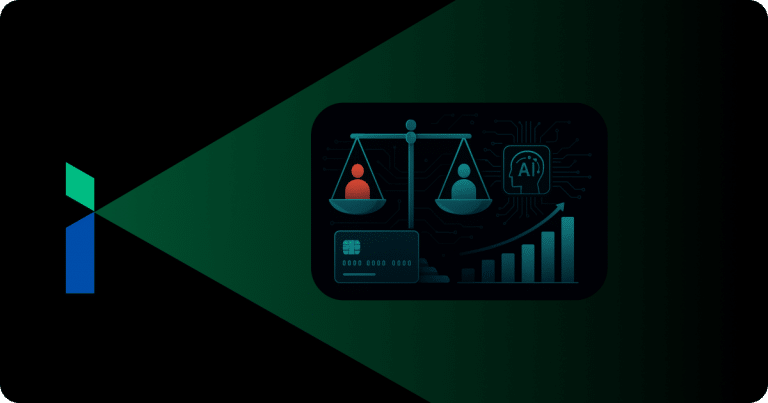Netflix is considered one of the first high-profile examples of a company demonstrating successful migration from private data centers monolithic architectures to cloud microservices architectures. It was felicitated with various awards for breathing new life into the application management and deployment arena. Today Netflix has more than a thousand microservices that handle and manage separate parts of the platform, while their industrious engineers deploy codes innumerable times a day.
Here’s a look at a new technology trend that is gaining a lot of traction – microservices
What is Microservices Architecture?
The microservices architecture refers to an architectural style applied to developing apps in which large applications are created through the amalgamation, collaboration, and integration of smaller independent components using a plug-and-play model in which a component can be disassembled and worked on or deployed independently without affecting other components.
Each component of this large application serves a specific business function or a particular responsibility. They are all flexible, robust, reusable, and fully functional.
Microservices architectures encourage loose coupling and high cohesion. Cohesion refers to the degree of integration between independent components of an application or how well the independent components work together. Coupling refers to the degree of interdependency between software modules or components of an application.
To understand the Microservices architecture and its pros and cons, let’s consider its opposite monolithic architecture.
Monolith Architecture is when all the components of a software application are compiled and encapsulated in a single codebase. Monolith Architecture is like a huge depository containing all the components of an application clubbed and integrated together in a single package.
Thus, a car can be considered a monolithic architecture where inefficiencies or defects in a component can hamper the performance of the whole vehicle. When your car is not functioning properly, it is not usually obvious what is causing it to malfunction. Hence, you have to deliver the entire car to the mechanic.
Iphones have monolithic architectures, as they must be disassembled and repaired before they can be stitched back together, in order to fix any malfunctions or discrepancies.
The ability to reuse code has been the holy grail of application development. Microservices is a new approach to software development that breaks large applications down into smaller modules that can be combined, re-used, and scaled in various ways. Each component has its own functionality and job, and it performs that job very well independently of the rest.
Small, independent functions allow developers to add new features, rapidly build applications with dedicated teams addressing each component of the application, and have a single-minded focus and ingenuity to monitor and improve that component’s performance.
Instead of having a team of 60 people monitoring and governing the performance of the entire application where there is often the case of “Too many cooks spoil the broth”. Having multiple teams, each with 5-6 people, can allow you to focus on one component, build expertise in that component, and thereby improve the overall application’s functioning.
Advantages of Microservices
Let’s look at some of the advantages of Microservices
Team Autonomy
Each microservice can be deployed independently without relying on other microservices, facilitating continuous improvement and faster app updates. There are specific microservices that can be assigned to specific development teams with complete control and management of the microservices, so that decisions are not stuck in the bureaucratic red tape of hierarchical systems, but instead offer the relevant teams complete autonomy to implement needle-moving decisions without worrying what else is going on.
Improved Fault isolation
In the event of a microservice failure, you can isolate the failure to that specific service without causing cascading failures to cause the app to crash. In monolith, if your app isn’t functioning properly, you have to provide access to the entire codebase, which exposes some highly confidential codebase for other features that may not be within the developer’s scope.
He may have to learn and understand the entire codebase, which is extremely cumbersome and time-consuming, and may not be relevant to the codebase that needs to be fixed. Setting up the project may require downloading the entire library and cache database, resulting in increased downtime.
Moreover, there is the risk that the developer will peruse the entire code and communicate it to the competitors, or alter the code, resulting in irreparable damage to the entire application.
If a microservice is malfunctioning, you have to provide access to only that component which is a small part of the jigsaw puzzle of the codebase. With just one microservice, it’s very difficult to fathom and comprehend the whole application. As a result, the confidentiality of the data is maintained, and the malfunctioning component is also fixed.
Also, the rest of the application can stay up and running inspite of one of its modules not working.
Easier Onboarding
Microservices are modular in design, so developers must constantly focus on one piece without worrying about the others. Thus, developers take on a focused role, without being overwhelmed with too much information or distracted by other complicated pieces, as in monolithic applications.
There is a service for every need, from data storage to communication. As a result, small teams can be entrusted with the responsibility of developing, testing and deploying a service.
As a result of the smaller scope of responsibility, onboarding is easy and straightforward.
Getting started is easy, new developers don’t have to understand how the whole system is integrated or connected, nor do they need to understand the functionality of each microservice. Microservices help companies reduce onboarding costs and get new hires up and running faster.
Independent Deployment
As independent, small components, microservices can be deployed independently in any application like plug-and-play modules. You can reuse, integrate them with other applications just as they are without messing with their inner workings. They can be reused, replicated, and combined with multiple unrelated applications.
The smaller the codebase, the faster and easier it is to deploy. This is because there are lesser dependencies to take care of within the microservices.
Continuous deployment is made possible by the independent deployment of microservices. This ensures that the user always has the latest software available.
As they are independently deployable, it gives organisations greater control over their applications. This increased control can be a major advantage for organisations that needs to quickly respond to changes in the market or industry.
Scalability
Consider an e-commerce website, where visitors have increased 10-fold to 1,00,000 while orders are sedentary at 1000 per day. Using a microservice-oriented architecture, only the microservice that handles the content feed on the website needs to be updated and deployed to accommodate the additional number of users and prevent the website from crashing. Order page microservice remains untouched. In this case, the entire system does not need to be taken down and re-deployed.
As a monolithic architecture requires updating all parts of the application, the massive updates may affect the website’s performance. It may also be necessary to take down the entire website, redesign it, redevelop it, and deploy it again. Due to the redeployment of the entire system, there may be some database breaks. Many iterations will cause the website to crash and hang, damaging the reputation of the company and affecting orders placed on the site.
Disadvantages
While Microservices have many advantages, they also have some drawbacks.
Dependency
The ideal world scenario involves independent, small components that are completely unrelated to one another and work seamlessly, unhindered together. It is impossible to ignore some dependency between microservices. For example, if you buy a T-shirt from an e-commerce store, it will trigger the inventory microservice of that store, which will deduct that T-shirt, and then show the consumer how many more T-shirts are available. Similarly, adding the T-shirt to the e-commerce cart will trigger the “view the cart” function. As a result, not all microservices are independent of each other; there are some dependencies to consider that may conflict with microservices’ concept and purpose.
Complex Infrastructure
In a monolith architecture, all the codebases are combined and integrated into a single package. Thus, you don’t need to worry about deployment when assigning dependencies in codebases. The parts are shipped together as a single package.
The parts of the microservices-oriented architecture are scattered across the network. Communication between services can become complex. The developer will have to spend time wiring together the different components to get the overall application running. There can be hundreds of microservices in an application, and all of them need to communicate securely.
Deconstructing and arriving at the bottom of any problem becomes very challenging when an application contains countless microservices, with each microservice having its own set of log files.
During monolithic testing, you simply launch the application and check its connectivity with the underlying database. As a result, the monolithic architecture facilitates integration testing. With microservices, the components are distributed, and the developers cannot test an entire application from their individual, disparate machines.
Discrepancies in the integration of microservices
In a microservices-oriented architecture, the individual components are likely to be very different in terms of their versions and upgrades, especially when there is no or little coordination between teams.
For example, in monoliths, there is just one codebase, so if 10 or 100 people work on it, they can see the same structure, the standards and protocols followed in designing it, the dependencies among different components, and the coding is already done.
As you work on the individual microservices, there may be discrepancies in the structure followed for implementing the code, and different teams may have different perspectives on dependencies, which may result in incompatible individual components within the application. Additionally, the way different components communicate with each other may change over time, resulting in a malfunctioning application with no apparent root cause.
Conclusion
The debate between monolithic architecture and microservices architecture is not new. One example is the feud between Bill Gates and Steve Jobs. Steve Jobs believed that software and hardware should be completely integrated with each other, just like monolithic architecture, whereas Bill Gates believed that software and hardware should be separate pieces, just like microservices-oriented architecture. Android and IOS later engaged in this fight, where Apple reiterated its belief that hardware and software should be completely integrated; hence IOS is only available on iPhone, whereas Google reiterated Microsoft’s belief hence Android is available on all phones. Nowadays, most applications are built using microservices-oriented architecture, which is winning the battle.
About us:
Perfios is the largest data, analytics, automation, and decisioning solution provider to FIs, catering to the entire lending lifecycle from onboarding to diligence & monitoring to collections. Perfios solutions enable systemic fraud prevention, risk management, compliance & automation through superior data engineering and deep tech applications.
In a nutshell, Perfios stands on the trifecta of digitization: automation, enhanced diligence, and robust decisioning for straight-through processing; thus, creating a state-of-the-art digitization process without compromising on security and quality. Perfio is a pioneer in the services it offers and has successfully acquired a very diverse portfolio of 300+ live clients, spanning across the largest gamut of use cases in the industry.














